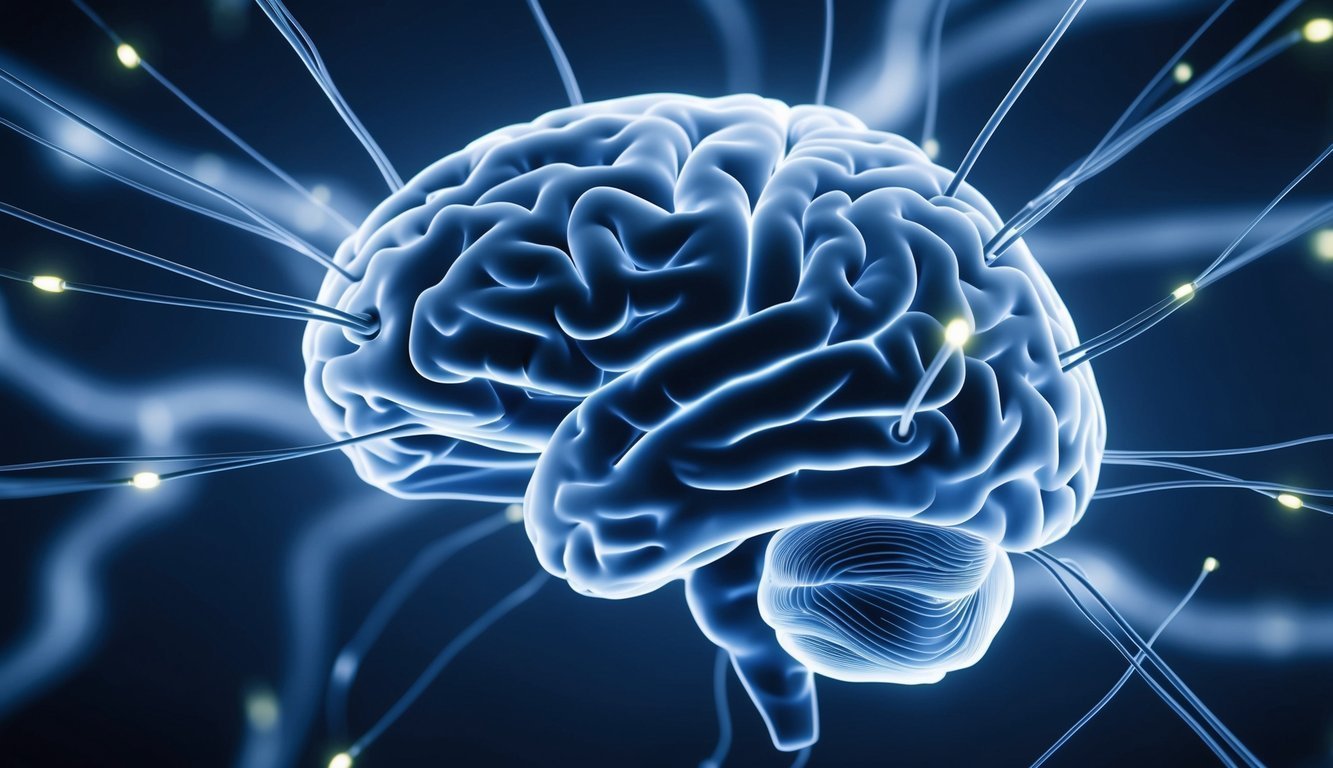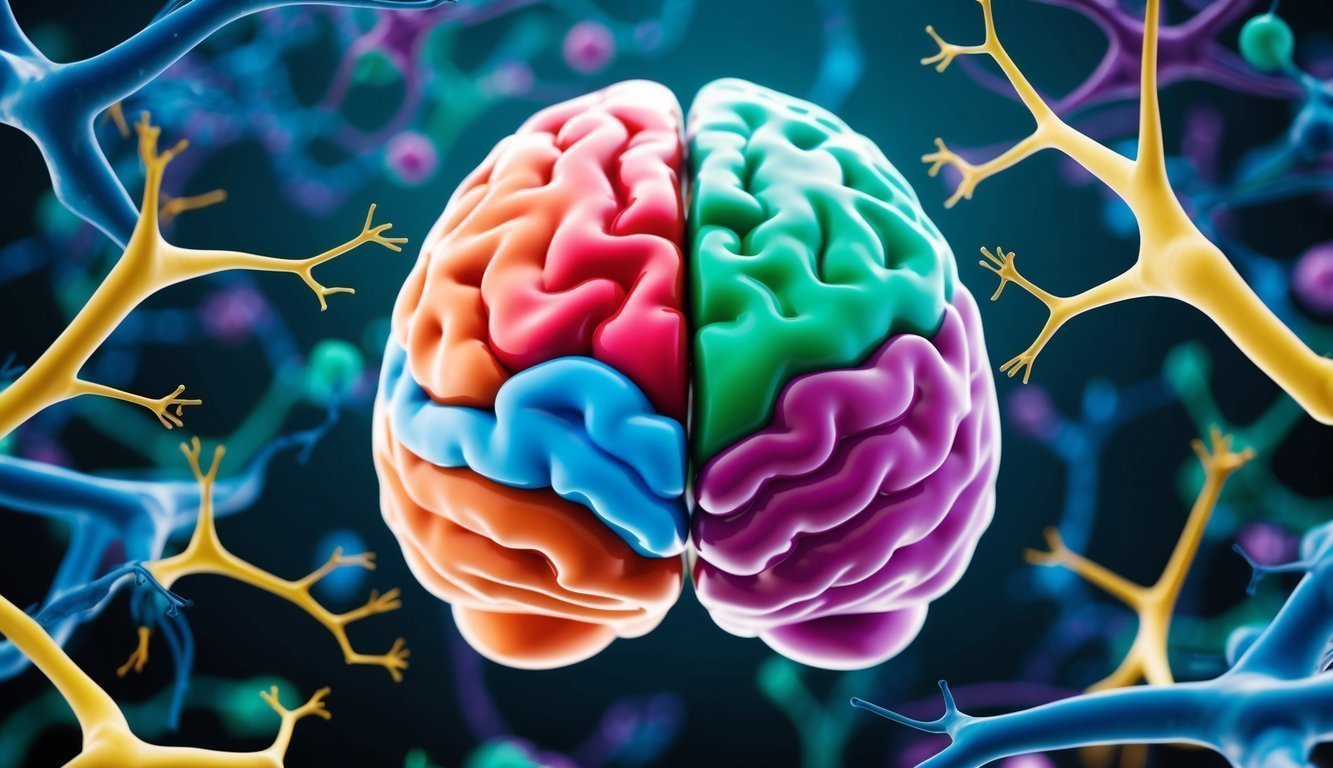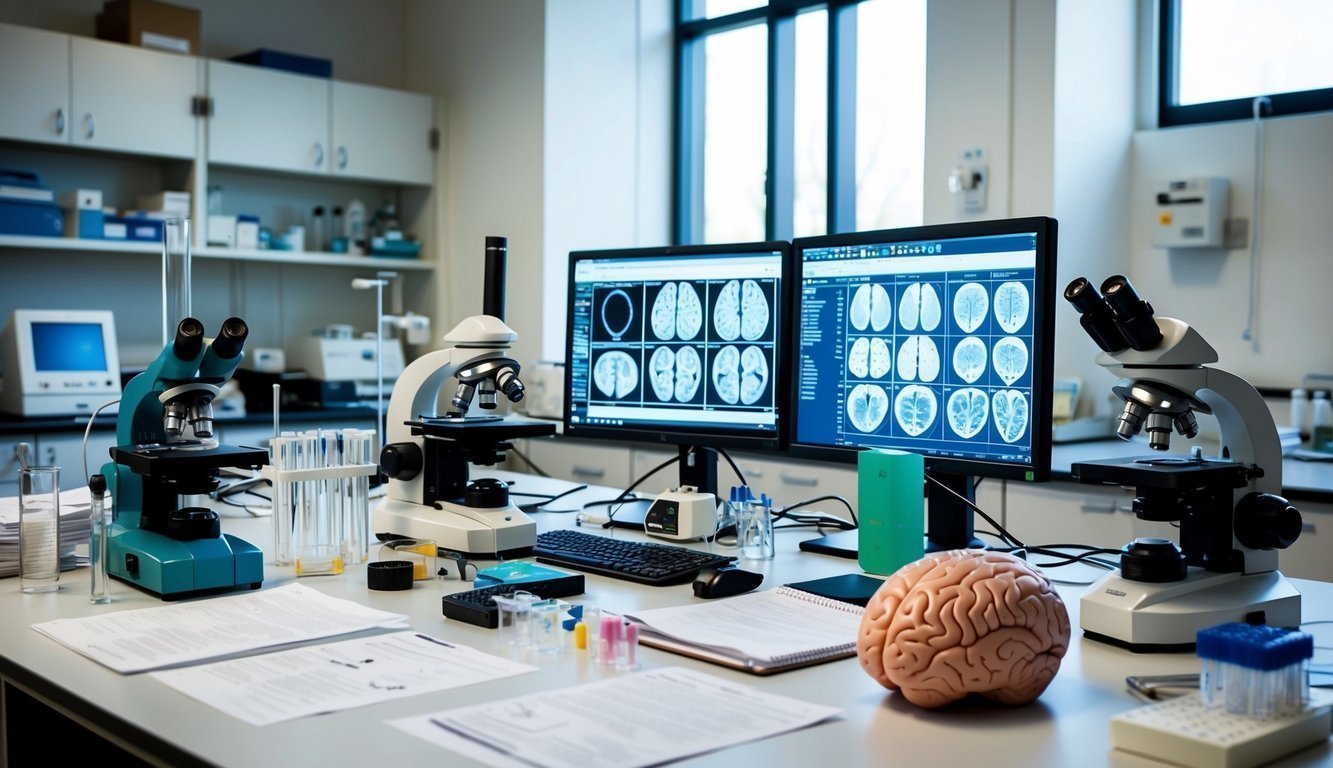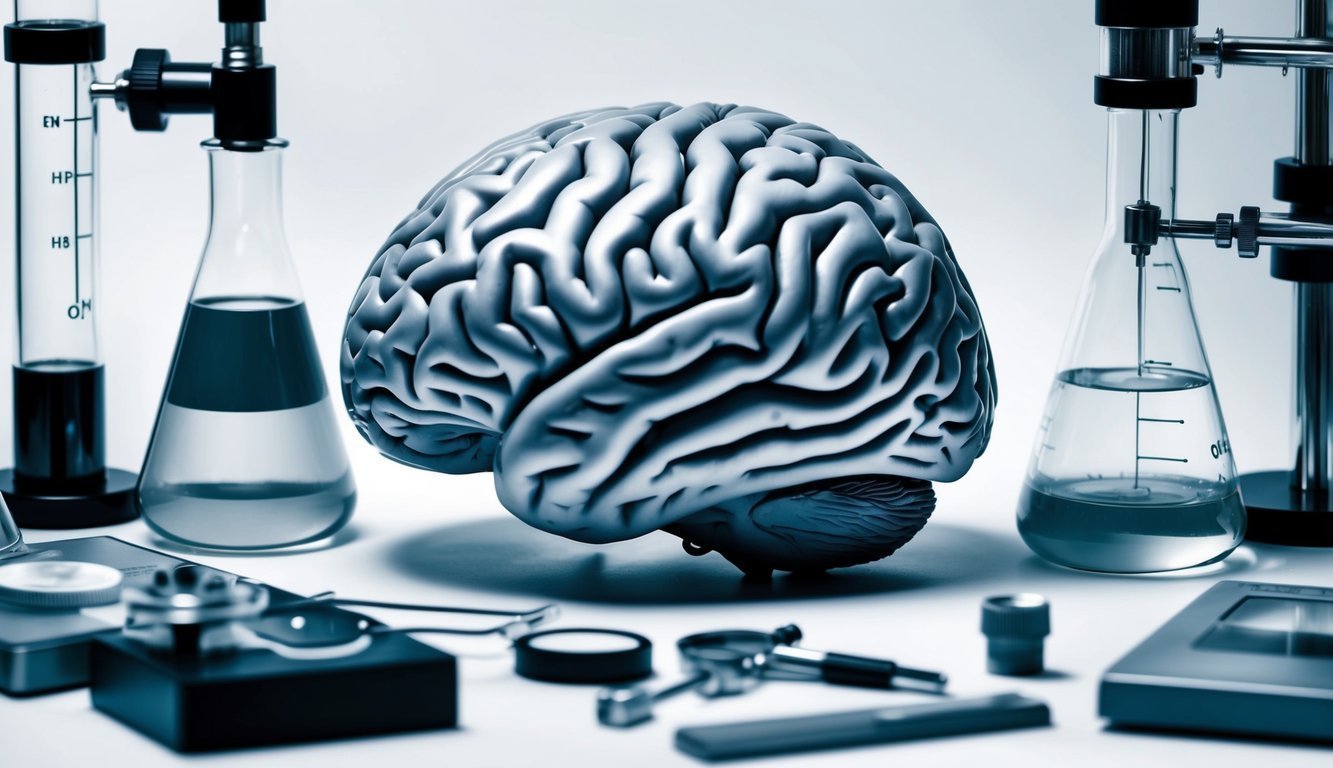PsychNewsDaily Publishers
100 Summit Drive
Burlington, MA, 01803
Telephone: (320) 349-2484
PsychNewsDaily Publishers
100 Summit Drive
Burlington, MA, 01803
Telephone: (320) 349-2484
Neuroscience focuses on brain structure, neuronal functions, cognitive processes, memory formation, and the impact of neurodegenerative disorders, utilizing advanced research techniques for insights and treatment.

Neuroscience investigates the complex functions of the brain and nervous system. This discipline analyzes the brain’s architecture, neuronal activities, neural networks, and signaling processes to gain insights into the nervous system’s functionality.
The brain is composed of gray matter, which contains the cell bodies of neurons, and white matter, made up of myelinated axons. The cerebral cortex, the outermost layer, is accountable for higher cognitive functions.
Notable regions of the brain include:
The brainstem and cerebellum are essential for regulating vital functions and coordinating movement. Subcortical structures, such as the thalamus and hippocampus, are pivotal in sensory transmission and memory formation.
Neurons serve as the basic building blocks of the nervous system. These specialized cells are responsible for processing and conveying information through electrical and chemical signals. A standard neuron includes:
The neuron doctrine, a fundamental concept in neuroscience, indicates that neurons operate as separate units that communicate through synapses. Glial cells provide support and protection to neurons, ensuring a stable environment within the brain.
Neural networks are essential for the brain’s information processing. These interlinked neurons develop complex circuits that facilitate cognitive functions, memory, and behavior.
Communication between neurons occurs at synapses, which can be classified as:
Synaptic plasticity underpins learning and memory formation by modifying the strength of connections between neurons, enabling the brain to adapt and change over time.
Neurons relay information via electrical impulses known as action potentials. These swift, self-propagating signals travel along axons and are initiated by alterations in membrane potential.
Essential stages of neural signaling include:
Neurotransmitters are biochemical messengers that cross the synaptic gap. They bind to receptors on the postsynaptic neuron, resulting in either excitation or inhibition. This intricate signaling framework constitutes the foundation of neural communication and brain functionality.

The human brain manages a multitude of tasks and processes that facilitate perception, learning, cognition, and movement. These interconnected systems collaborate to process information, form memories, generate ideas, and control bodily functions.
The brain’s capability to decode sensory information is vital for engaging with and comprehending the environment. Sensory integration encompasses the merging of inputs from various senses to construct a unified perception of reality.
Visual processing takes place in the occipital lobe, while auditory information is processed in the temporal lobe. The parietal lobe integrates sensory information from diverse modalities.
Disorders in sensory processing can stem from challenges in synthesizing sensory inputs, affecting behavior and cognitive abilities.
The brain’s perceptual systems exhibit high adaptability, enabling phenomena such as sensory substitution, where one sense can partially make up for the loss of another.
Memory formation and learning are crucial cognitive functions that shape behavior and thought processes. Short-term memory relies on transient electrical activity, in contrast to long-term memory, which involves structural modifications within neural networks.
The hippocampus is integral in transforming short-term memories into long-term ones. Different types of memory include:
Learning processes revolve around synaptic plasticity, where neuronal connections are modified based on experience. This neuroplasticity enables the brain to adjust and assimilate new information throughout life.
Sleep plays a vital role in memory consolidation, with various stages of sleep contributing to the different facets of learning and recall.
Cognitive neuroscience examines the neural substrates of advanced mental activities such as thinking and language. The prefrontal cortex is crucial for executive functionalities like decision-making and problem resolution.
Language processing engages several brain areas:
Neuroimaging techniques have demonstrated that language processing is distributed across a network of areas in both cerebral hemispheres, rather than being strictly localized.
Thought is characterized by complex interactions among various brain regions, with the default mode network engaged during self-reflection and mind-wandering.
The motor systems of the brain orchestrate both voluntary and involuntary movements. The primary motor cortex, located in the frontal lobe, transmits signals to muscles via the spinal cord.
The cerebellum is essential for motor learning, coordination, and balance, adjusting movements through sensory feedback comparison with intended actions.
Structures within the basal ganglia are key to selecting and initiating actions. Disorders affecting these regions, such as Parkinson’s disease, can result in movement challenges.
Motor learning entails the development of neural pathways that lead to smoother and more efficient movements with practice, which is vital for skill acquisition and environmental adaptation.

Neuroscience offers essential insights into brain functionality in both healthy and diseased states. Recent advancements have illuminated the neural mechanisms underlying various conditions and potential treatments.
Alzheimer’s disease, a progressive neurodegenerative condition, impacts millions across the globe. Research indicates that abnormal protein build-up in the brain, notably amyloid plaques and tau tangles, is central to its pathology.
Research has pointed to the nucleus accumbens as a potential intervention target for Alzheimer’s at early stages. This brain area, connected to reward and motivation, exhibits changes in the disease’s initial phases.
Scientists are working on novel biomarkers and imaging techniques to diagnose Alzheimer’s prior to the onset of symptoms. Early detection may facilitate more effective treatments and enhance patient outcomes.
Stroke, a primary cause of global disability, results from interrupted blood flow to the brain. Neuroscience has transformed our comprehension of stroke mechanisms and the recovery process.
Research has identified critical timeframes for intervention after a stroke incident. The concept of neuroplasticity— the brain’s capability to reorganize— plays a crucial role in recovery.
Innovative neuroimaging techniques enable researchers to track changes in the brain during recovery, guiding the development of targeted rehabilitation strategies.
Neuroscience breakthroughs are enabling groundbreaking treatments for neurological disorders. Gene therapy shows potential for addressing specific genetic neurological conditions.
Deep brain stimulation, already applied for Parkinson’s disease, is under examination for other disorders. This method involves implanting electrodes to modulate targeted brain circuits.
Neurofeedback allows patients to learn to control their brain activity, showing potential for treating ADHD and anxiety disorders.
Stem cell therapy is being studied for its ability to regenerate damaged neurons in several neurological diseases. Though still in the experimental phase, initial findings are encouraging.

Neuroscientific research utilizes a broad spectrum of advanced methodologies to unravel the brain’s intricacies. These techniques range from measuring electrical activity to exploring genetic influences on neural development.
Electroencephalography (EEG) is a foundational technique in neuroscience. It captures electrical activity in the brain via electrodes placed on the scalp, offering high temporal resolution for monitoring rapid brain activity changes.
Researchers employ EEG to examine information processing in the brain, particularly for cognitive functions like attention, memory, and language processing.
Single-unit recording is another key approach, involving the insertion of microelectrodes into individual neurons to assess their electrical activity. This method yields insights into how specific neurons react to stimuli or contribute to behavior.
Functional magnetic resonance imaging (fMRI) has transformed brain research by measuring blood flow changes to identify active brain regions during activities.
Brain connectivity research employs techniques like diffusion tensor imaging (DTI) to delineate neural pathways, clarifying how various brain regions communicate and collaborate.
Optogenetics merges genetic and optical methods to manipulate specific neurons, allowing researchers to control neural circuits with unprecedented accuracy.
Genetic research in neuroscience focuses on pinpointing genes that affect brain development and functionality, using techniques such as genome-wide association studies (GWAS) to correlate genetic variations with neurological traits or disorders.
Developmental neuroscience explores the evolution of the brain over time, employing techniques like in vivo imaging to observe neural growth in living subjects.
Epigenetic investigations consider how environmental influences can modify gene expression in the brain, offering insights into how experiences shape brain morphology and function.
Progressive data analysis methods are critical in contemporary neuroscience. Researchers employ statistical techniques to decode complex datasets from brain imaging and genetic inquiries.
Machine learning algorithms can discern patterns in extensive neural datasets, predicting brain responses or classifying neurological disorders based on activity patterns.
The Allen Institute offers comprehensive brain atlases and datasets, providing substantial resources for researchers exploring brain structure and function.
Neural computation models simulate how the brain functions, aiding in the testing of hypotheses about neural operations and generating new predictions for experimental research.

Neuroscience harmonizes multiple disciplines to unpack the complexities of the brain. This integrative approach fuses computational methodologies, cognitive theories, and physical sciences for a holistic understanding of neural activities.
Computational neuroscience utilizes mathematical frameworks to emulate brain functions, facilitating predictions of neural responses and testing hypotheses regarding brain mechanisms.
Artificial neural networks, inspired by biological neural structures, are employed to explore learning and memory mechanisms, offering insights into information processing and the brain’s adaptability to novel stimuli.
Computational models help in analyzing extensive brain data, and sophisticated algorithms process neuroimaging results, identifying activity and connectivity patterns.
Cognitive neuroscience combines psychological theories with advanced brain imaging techniques. This integration allows for the connection of mental processes to specific brain regions and neural networks.
Studies in cognitive neuroscience investigate how cognitive functions like attention, memory, and decision-making are associated with brain activity. Functional MRI and EEG are frequently employed to monitor brain reactions during cognitive tasks.
Psychological concepts also shape the questions posed in neuroscientific inquiry. Theories regarding consciousness and perception inform explorations into the neural correlates of subjective experiences.
Advanced brain imaging technology relies on physical principles, employing various phenomena to visualize and manipulate neural activity. Methods such as MRI, PET, and optogenetics are representative of this integration.
Some researchers investigate quantum mechanical concepts in relation to specific brain functions, suggesting that quantum effects might influence consciousness and cognitive phenomena.
Chemistry aids in our understanding of neurotransmitter interactions, with biochemical analyses shedding light on how neurotransmitters impact synaptic transmission and neural signaling pathways.
Neurochemistry research focuses on how drugs and hormones affect brain operations, providing vital information necessary for devising treatments for neurological and psychiatric conditions.
“`